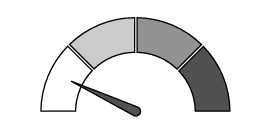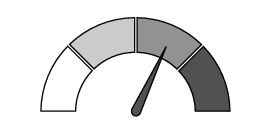The car's certified values for range and electricity consumption
The car's range and electricity consumption are dependent on a number of factors. The ability to achieve a long range and low electricity consumption varies according to the circumstances and conditions under which the car is being driven.
The certified values for the car's range on electric power should not be interpreted as an expected range. The certification values are comparative values that are obtained by means of special drive cycles (see below) and should primarily be used to compare different cars.
The values in the table below are in accordance with WLTP (Worldwide Harmonised Light-Duty Vehicles Test Procedure), which is an international test method for vehicles equivalent to a passenger car designed for laboratory testing.
 | Certified value for the car's potential range ("up to") in km. The value should not be interpreted as an expected range, and the range is difficult to achieve during normal driving. |
 | Urban and suburban driving |
 | Average value over all four drive cycle phases (urban, suburban, extra-urban and motorway driving) |
 | Certified value for the car's electricity consumption (kWh/100 km). The value is an average value over all four drive cycle phases (urban, suburban, extra-urban and motorway driving). |
 | Low value |
 | High value |
Note
 |  | ||
|---|---|---|---|
 |  | ||
 | 572 | 479 | 18,8 |
 | 510 | 420 | 21,6 |
The values in the table above for range in electric mode and electricity consumption are based on special drive cycles (see below). The car's weight may increase depending on its equipment level. Together with how heavily the car is loaded, this affects and reduces its range in electric mode and increases electricity consumption. According to WLTP, each car has unique electric range values, depending on how the car is equipped. In many markets, you can find your car's unique electric range values in the car's registration document.
There are a number of reasons as to why the range (mileage) is shorter and electricity consumption is higher than indicated in the table values. Examples of these include:
- If the car is equipped with extra equipment that affects its weight.
- Driving style.
- If the customer chooses wheels other than those mounted as standard on the basic version of the model, this could increase rolling resistance.
- High speed, which causes increased air resistance.
- Road and traffic conditions, weather and the condition of the car.
WLTP standard
As of 1 September 2018, a new standard was introduced for calculating electric range values in the car. The WLTP standard represents the average driving conditions for everyday driving. In comparison with the previous standard (NEDC), WLTP takes into account more varied traffic situations and speeds, but also equipment and weight classes. Optional equipment that affects electric range values is deactivated during testing, e.g. air conditioning, seat heating, etc. The new standard should provide more realistic figures when it comes to range for electric operation. The values are intended to allow comparison between different cars and not to represent your typical range for electric mode.
Drive cycle profiles
A drive cycle simulates actual average driving of the car. The standard is based on four different drive cycle profiles. The four drive cycle profiles are:
- Urban driving – slow driving
- Suburban driving – average driving
- Extra-urban driving – fast driving
- Motorway driving – very fast driving.
Every drive cycle is determined by different conditions such as speed, time and mileage, for example.